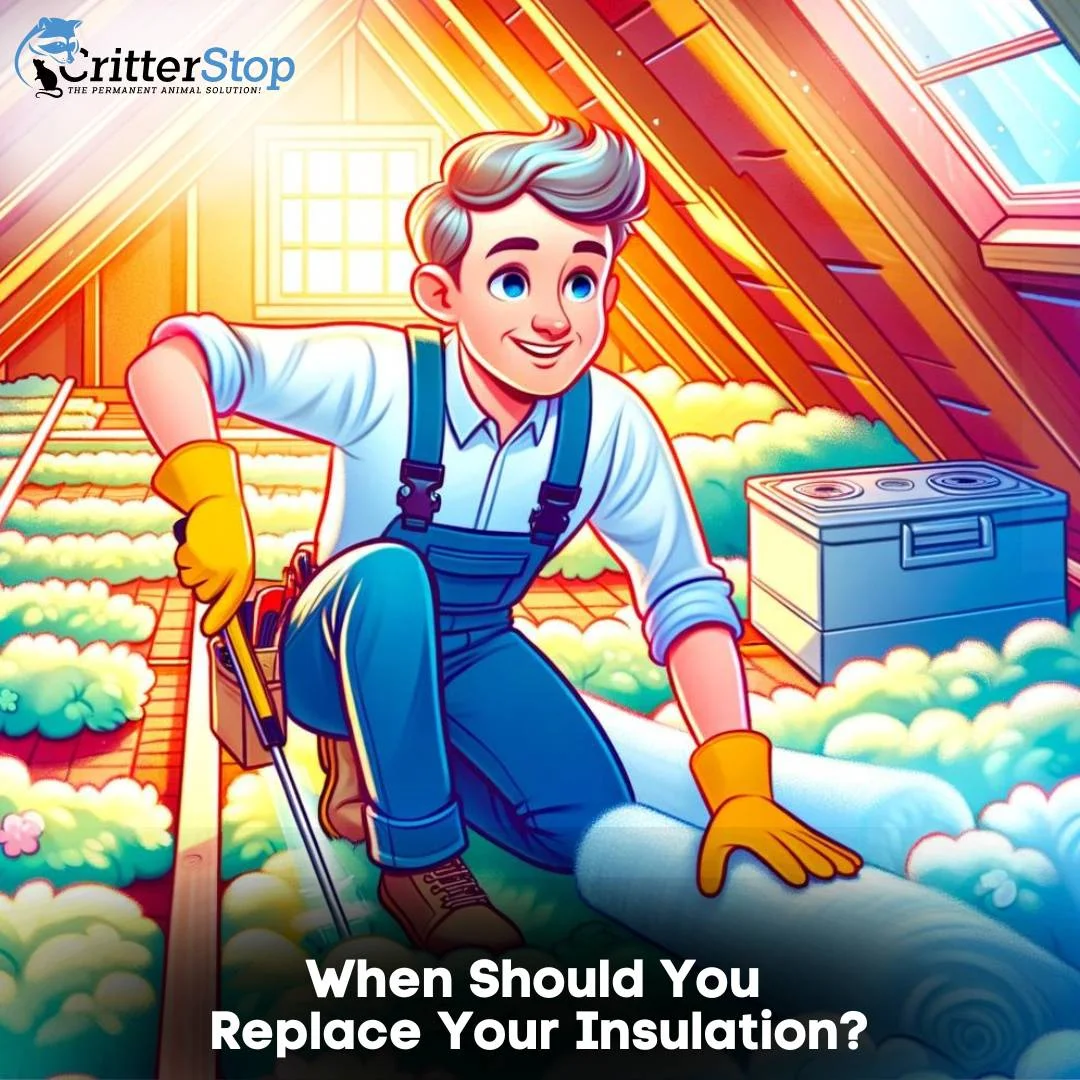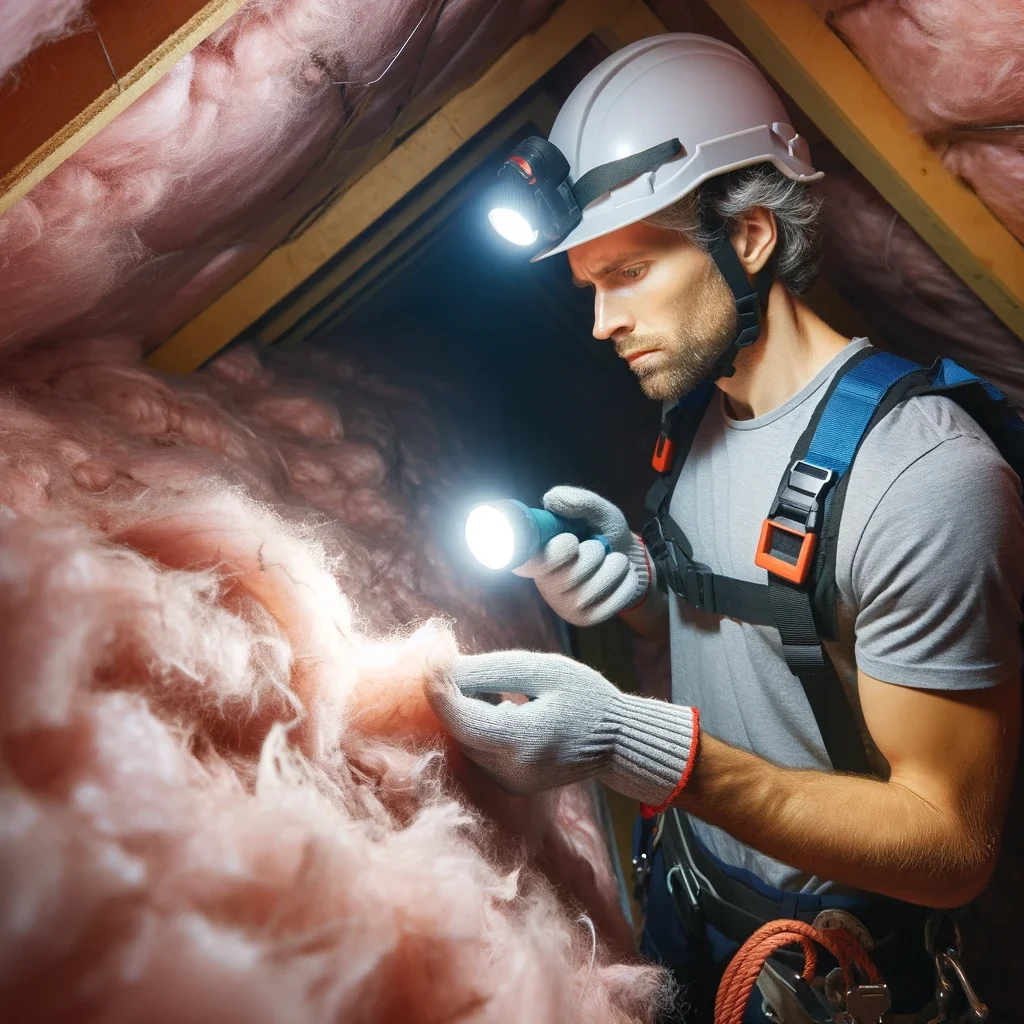
Just having walls and a roof will not be enough to separate the indoor air from the harsh and polluted outdoor air. That's where home insulation comes in handy. More importantly for most, insulation is one of the best investments homeowners can make to reduce their energy bills.
Home insulation creates a barrier that keeps the heat out during summers and during winters. This prevents homeowners from having to rely as much on air conditioners and heaters to maintain a comfortable temperature in their homes. Just like any other part of your house, insulation is also prone to damage and deteriorates over time.
As experts, we know that Insulation will not remain perfect forever. Water, dust, rodents, and other compromising factors can make the insulation less effective over time. As a result, it is only a matter of time before your insulation needs to be replaced. Although not urgent, it is still very important. If your insulation is damaged or deteriorated to the point that it is no longer effectively limiting heat transfer, it should be replaced.
Since home insulation stays out of sight and out of mind, homeowners often forget to replace it, even after it has completely worn out. Electric bills stead increase, but homeowners often do not realize that poor insulation might be the reason for their rising heating and cooling costs.
How do homeowners know it is time to get their attic insulation replaced? To know exactly when you should consider replacing your insulation, you must know the lifespan of the insulation material you used and what factors can compromise its lifespan.
Standard batt insulation starts peeling from the walls after about 10 to 15 years. However, rodent or other wildlife infestations, dust, and water can lower this considerably. To get a clear idea of how long your insulation material can last, at Critter Stop we have prepared the lifespans of different insulation materials:
Spray foam insulation is becoming increasingly popular. Homeowners are using it in their newly constructed homes because it is durable, reliable, and provides better protection from moisture. It can last many decades because it does not naturally deteriorate as easily. It is also moisture-resistant, so it cannot contribute to mold and mildew growth.
Once applied, spray foam insulation will not move from its place unless you cut it away. It is unlikely that you will have to repair or replace your spray foam insulation unless it is disturbed by rodents.

Fiberglass insulation is undoubtedly the most popular insulation material because it is cost-effective and cleaner than cellulose. While the insulation itself can last for 80+ years, unless it gets damaged by mold or rodents, it does slowly deteriorate over time.
Because of this deterioration, fiberglass insulation can start losing its effectiveness in less than 15 to 20 years. To work properly, fiberglass insulation needs to be fluffy and thick. It is moisture-resistant to some extent, but if it continuously gets wet from a roof leak, it will need to be replaced.
If the fiberglass insulation in your attic is thin and deteriorated, it would be wise to get it replaced if you plan to live in your house for several years. Depending on how low it gets, the return on investment can be very attractive.
Cellulose insulation is composed of recycled waste materials, such as newspapers, making it the most environmentally friendly type of insulation material. However, it only has a lifespan of 20 to 25 years. It will start degrading naturally after 15 years of its installation.

While rodents typically do not like cellulose insulation, if the cellulose insulation gets wet, it needs to be replaced regardless of its age because it can grow mold and mildew.
When we have provided insulation removal service, we have found that It is pretty natural for energy bills to be higher in the colder or hotter months than the rest of the year. However, the rise in costs does not have to be as extreme as some homeowners experience.
Have you noticed a big jump in your heating and cooling bills? It could be a sign that your home insulation is no longer effective and needs to be replaced. Conduct an energy audit and examine the condition of your home insulation, along with other areas of your house that can be vulnerable to energy leaks.
Does your home smell like an animal shelter? Do funky and foul odors linger around even after you have thoroughly cleaned the entire house?
Unfortunately, other than spray foam insulation, other types of insulation materials can easily absorb moisture. Wet insulation can grow which will result in a funky-smelling house. More importantly, mold can further contaminate the air you and your family members are breathing. It can become a major health concern for you and your family in the future.
In our experience as an Insulation provider, If your house smells unpleasant and you cannot determine the source, it is worthwhile to check your insulation and see if it is time to replace it.
When we provide attic insulation, we find that can be a host for many types of unwanted critters and pests in your home. Many critters and pests may be living in your attic insulation, whether you are aware of them or not.
Ever heard the phrase, “quiet as a mouse?” Rodents are intentionally very sneaky, so oftentimes homeowners are not aware they have a problem until it has already escalated to an infestation.
Also, these critters, such as mice, rats, squirrels, raccoons, and other wild animals, can build their nests out of your insulation material and start raising families! These critters leave behind urine and fecal droppings, which contain many harmful types of bacteria. Animals in your attic can gradually turn into an animal infestation, which can become a significant health hazard for you and your family.
Sometimes, these rodents and pests will use your attic insulation as nesting material. While fiberglass insulation is immensely popular among homeowners, it is also a favorite insulation material for rodents to nest in. Spray foam insulation is their least favorite as it cannot easily be used for nesting material.
If you suspect you have rodents or other animals in your attic insulation, take immediate action and get them removed. Animals in your attic is a problem that very rarely solves itself but instead gets much worse with time. Once you have removed the animals, it is often necessary to replace the contaminated and unsanitary insulation.
While replacing your attic insulation is a long and laborious process, and having mice or rats in your attic may be something you want to ignore for a while, the longer you wait to get your insulation replaced, the more extensive the damage will be. Without replacement, animal-infested attic insulation can also be harmful to you and your family's health.

Are you experiencing continuous allergy symptoms that do not seem to get any better even after receiving proper treatment? You may assume that you need stronger allergy medicine. However, the real culprit can be your old attic insulation, which may be heavily contaminated with mold, dust, or rodent droppings. If you have cellulose insulation, which is essentially recycled newspaper, breaks down, turning into a fine dust that can bother homeowners’ respiratory systems.
If you and your family members are suffering from terrible allergies, it may be an excellent decision to get your old insulation checked. Old insulation that has deteriorated over time can adversely affect the air quality of your home. To maintain ideal air quality and keep allergens outside of your house, replace the old insulation as soon as possible.
Have you ever walked into a room in your home to realize that it is much cooler or warmer than the other rooms? If you have a drafty room in your house, that is a sure sign of insulation failure.
Insulation provides a barrier between the inside and outside of your home to limit heat transfer. However, if the barrier no longer exists or is compromised, it is easy for cool and warm air to enter your house, creating a draft.
If you have a drafty room, consider replacing your attic insulation, or at the very least, getting it “topped off” – which will add ~4-10 inches, with an emphasis on relatively low areas, to get your insulation where it needs to be from an energy efficiency perspective. If the attic insulation is not contaminated, adding additional insulation on top of the existing insulation in your attic will be much more cost-effective since you will not have to remove and dispose of the old attic insulation – a laborious process.
Do you know when the last time your insulation was replaced? Insulation is built to last, but it does not mean it will last a lifetime. If you have just moved to your new house, it is wise to get the opinion of a DFW insulation company that can provide a thorough inspection for you.
Now that you know it's time to replace your old attic insulation, how do you start? You have a couple of options. You can do it yourself or hire one of the most reliable insulation companies to replace your attic insulation. If you are looking for an insulation contractor in the Dallas-Fort Worth Metroplex, Critter Stop can help you with just about any situation, whether it is critter removal, sanitation, insulation removal, or insulation installation. We are a one-stop solution for all your insulation needs! Call us at (214) 234-2616 and get a free estimation!
Visit our Critter Library and learn more about our furry friends